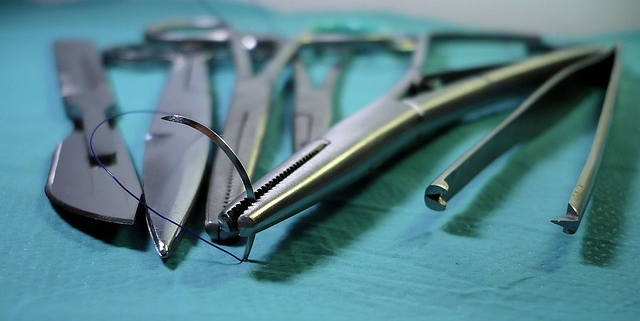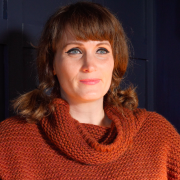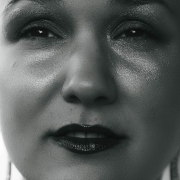Outcomes of Craniocervical Instability Fusion Surgery in People with EDS
A recent study by Henderson et al. found significant benefits for EDS patients with severe craniocervical instability who underwent occipito-cervical fusion surgery.
Craniocervical instability is one of the most severe neurological complications of the Ehlers-Danlos syndromes, causing many affected individuals symptoms such as headaches, severe full body pain, dizziness, nausea, blurred vision, paresthesia, fatigue, weakness, numbness, vertigo and many more. For those with severe CCI, the condition can be disabling to life-threatening and surgery may be indicated. However, only a few experts in the whole world provide occipto-cervical fusion – a fusion from the base of the skull with parts of the upper cervical spine – to people with connective tissue disorders, mostly due to a lack of scientific evidence underlining risks and benefits of surgical intervention. This study is the first of its kind to describe outcomes after craniocervical fusion surgery in patients with Ehlers-Danlos syndrome.
What’s the study about?
The authors conducted a retrospective analysis of patients with CCI and Ehlers-Danlos syndrome (EDS) to find out if the criteria they use to choose for surgery are justified by the outcome.
They chose 53 people with EDS who had open reduction, stabilization and occipito-cervical fusion; 32 also had suboccipital decompression for obstruction of cerebral spinal fluid flow.
The criteria that was used to choose who gets surgery were:
- Severe head and neck pain
- Lower cranial nerve deficits
- Cervical medullary syndrome
- Myelopathy
- Supporting radiologic findings of CCI
- Failed non-operative management
- Ability to understand the procedure
How did they do it?
The study is based on questionnaire data and clinical findings from a five to 28 months period after surgery, which were retrospectively analyzed. The mean time from onset of symptoms to surgery was 12 years.
The intake questionnaire on their first visit included questions about severity of pain, lightheadedness, syncope and presyncope, fatigue, mental clarity, symptoms related to cervical medullary syndrome. Additionally, the neurosurgeon did a neurological examination. They also used medical information otherwise provided.
In terms of imaging, they used a combination of dynamic MRI in flexion and extension and dynamic supine CT in full neck rotation and the following radiological measurements to determine if the patient was pathological or not:
- MRI: Horizontal Harris Measurement (pathological when greater than 12 mm)
- BAI between flexion and extension (pathological when greater than 4 mm)
- CXA (pathological when smaller than 135 degree)
- Grabb-Mapstone-Oaks (pathological when greater than 9 mm)
- CT: C1/C2 angular displacement ≥ 41°, or lateral displacement C1 upon C2 ≥ 4 mm on lateral head tilt, or > 80% loss of facet overlap on 3D CT reconstruction
Surgery involved open reduction and realignment with occipto-cervical fusion between 2018 and 2020. In those cases with Chiari malformation, suboccipital decompression was performed.
Patients were excluded if they were under 18, pregnant, experienced severe medical complications, or had a previous fusion surgery.
What was the outcome?
The study showed improvement of the following:
- Headache and neck pain
- Use of pain medication
- Karnofsky Performance Status score (a widely used scale to assess a patient’s functional status and ability to perform daily activities. The KPS score ranges from 0 to 100, with higher scores indicating better functional ability)
- Nausea
- Syncope
- Speech difficulties
- Concentration
- Vertigo
- Dizziness
- Numbness
- Arm weakness
- Fatigue
What’s the conclusion?
The authors state that the outcome of the study supports the selected criteria for CCI surgery due to the strong evidence for improvement after surgical intervention.
However, this study was a retrospective study and had no control group, so the authors cannot validate any definite criteria for CCI surgery, but only their reasonableness in their opinion based on the patient population at hand. The authors noted that they “concur that occipito-cervical fusion is rarely indicated for Chiari Malformation and should be reserved for patients in whom the primary underlying pathology is mechanical instability and those including the “complex Chiari” in whom significant deformity of the brainstem or upper spinal cord is manifest in the characteristic neurological presentation.”
What does that mean?
This means that a lot more research needs to be done. While this group of doctors found standardized criteria reasonable to justify surgery on their patients, those might not be used by other experts. Standardized criteria for CCI surgery on EDS patients are needed. Moreover, we need a set of standardized measurements for radiological findings as well – pathological angles on Upright MRIs, CT scans or other. The authors suggest developing clear guidelines to find out which patients would most benefit from surgery. Additionally, more research is needed on the outcomes of those surgeries in the long term.
Read the full publication here:
Henderson Sr, F. C., Schubart, J. R., Narayanan, M. V., Tuchman, K., Mills, S. E., Poppe, D. J., … & Francomano, C. A. (2024). Craniocervical instability in patients with Ehlers-Danlos syndromes: outcomes analysis following occipito-cervical fusion. Neurosurgical Review, 47(1), 27.
https://www.ncbi.nlm.nih.gov/pmc/articles/PMC10758368/
If you want to learn more about cervical spine instability and how those affect people with EDS, we put together a comprehensive patient guide with e-book:
Additionally, this informative publication by Russek et al. summarizes diagnostics and management of CCI extremely well:
Russek, L. N., Block, N. P., Byrne, E., Chalela, S., Chan, C., Comerford, M., … & Hakim, A. (2023). Presentation and physical therapy management of upper cervical instability in patients with symptomatic generalized joint hypermobility: International expert consensus recommendations. Frontiers in Medicine, 9, 4020.
https://www.ncbi.nlm.nih.gov/pmc/articles/PMC9893781/
Our writer Christie Cox also interviewed author Leslie Russek. You can read the interview here:
March 2024
Karina Sturm



 Karina Sturm
Karina Sturm








Leave a Reply
Want to join the discussion?Feel free to contribute!